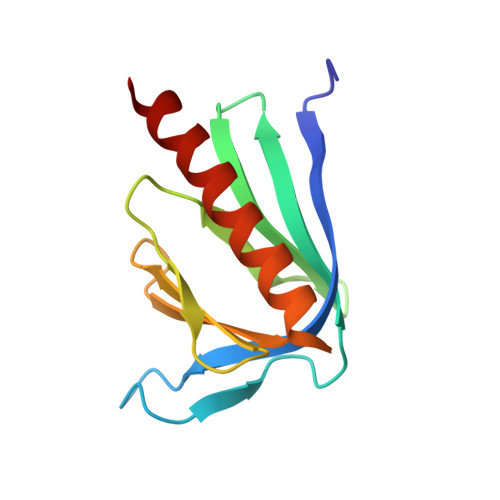NFAT binding and regulation of T cell activation by the cytoplasmic scaffolding Homer proteins.
Huang, G.N., Huso, D.L., Bouyain, S., Tu, J., McCorkell, K.A., May, M.J., Zhu, Y., Lutz, M., Collins, S., Dehoff, M., Kang, S., Whartenby, K., Powell, J., Leahy, D., Worley, P.F.(2008) Science 319: 476-481
- PubMed: 18218901
- DOI: https://doi.org/10.1126/science.1151227
- Primary Citation of Related Structures:
2P8V - PubMed Abstract:
T cell receptor (TCR) and costimulatory receptor (CD28) signals cooperate in activating T cells, although understanding of how these pathways are themselves regulated is incomplete. We found that Homer2 and Homer3, members of the Homer family of cytoplasmic scaffolding proteins, are negative regulators of T cell activation. This is achieved through binding of nuclear factor of activated T cells (NFAT) and by competing with calcineurin. Homer-NFAT binding was also antagonized by active serine-threonine kinase AKT, thereby enhancing TCR signaling via calcineurin-dependent dephosphorylation of NFAT. This corresponded with changes in cytokine expression and an increase in effector-memory T cell populations in Homer-deficient mice, which also developed autoimmune-like pathology. These results demonstrate a further means by which costimulatory signals are regulated to control self-reactivity.
Organizational Affiliation:
Program in Biochemistry, Cellular and Molecular Biology, Johns Hopkins University School of Medicine, Baltimore, MD 21205, USA.















